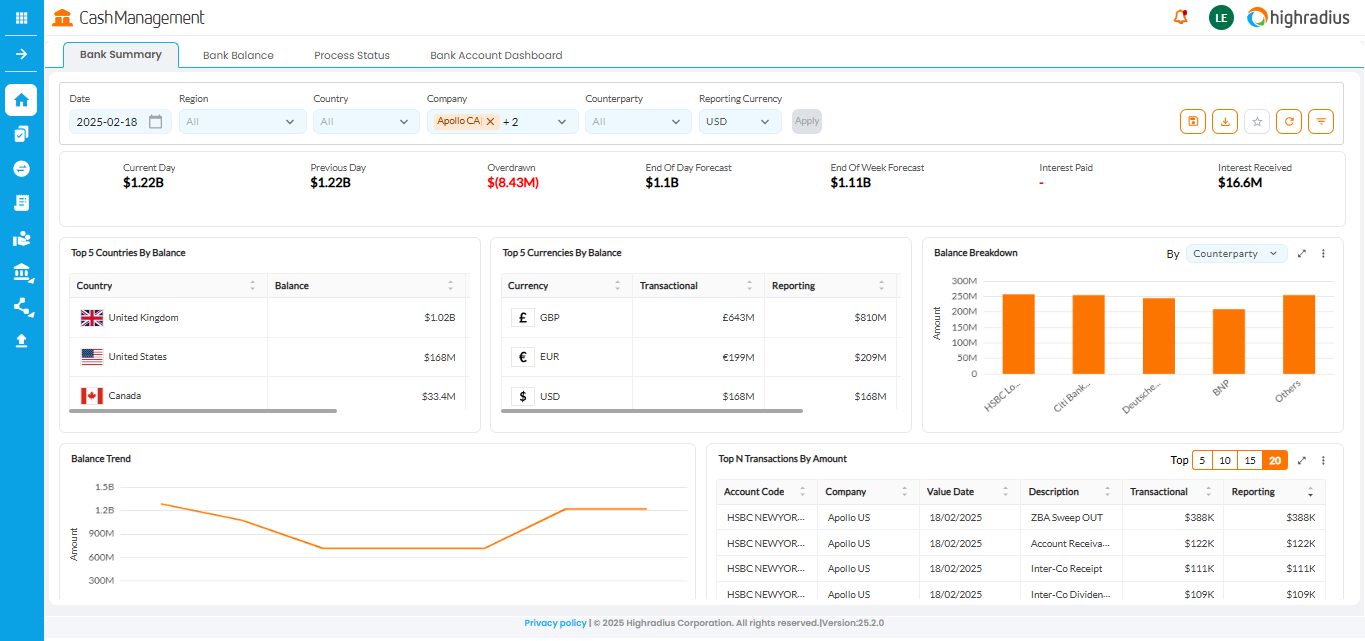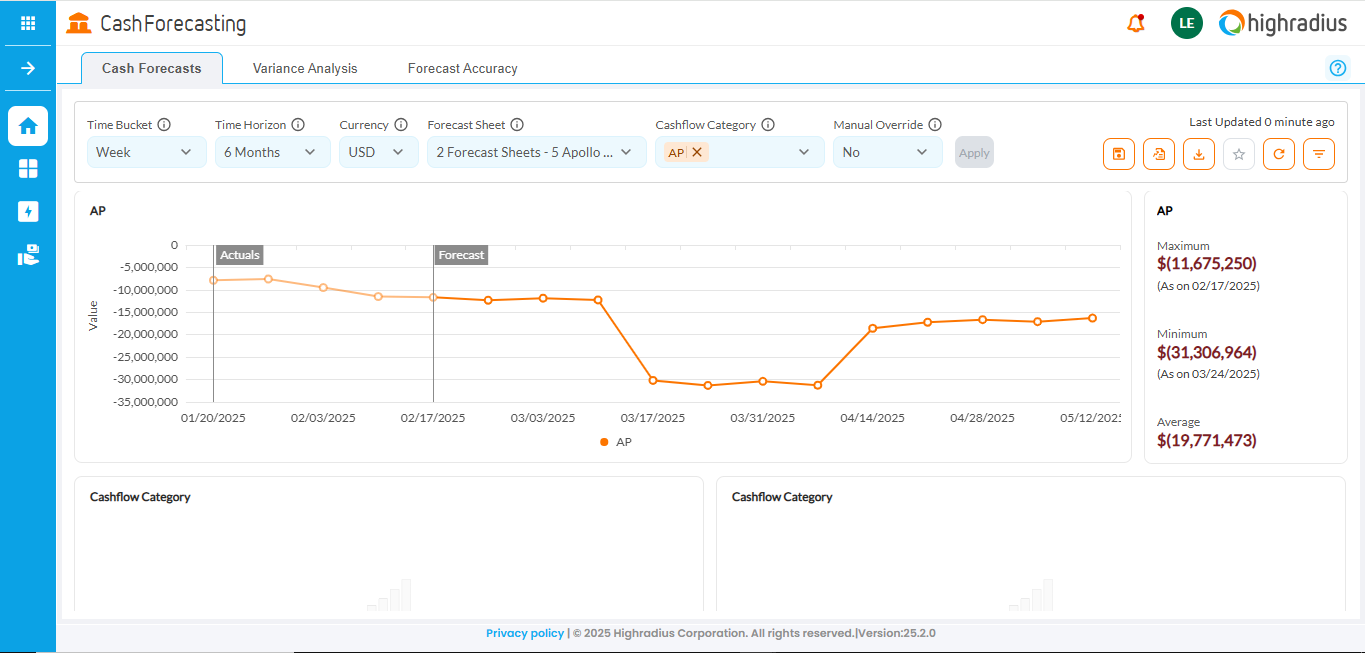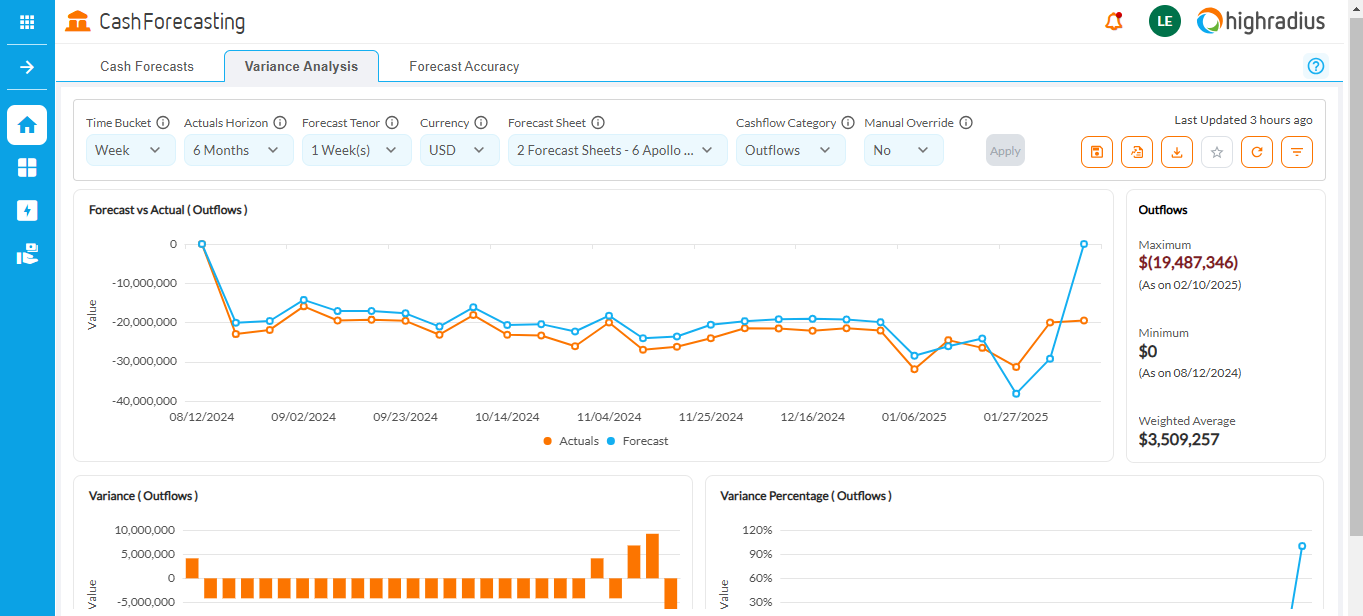Variance Analysis Software
100% cash visibility powered by AI agents
- Leverage AI-driven variance analysis to identify trends and track deviation
- Enhance cash flow forecasting efficiency and make data-driven decisions
- Make informed adjustments and streamline financial planning
Trusted by 1100+ Global Businesses

Enhance Forecash Accuracy by 95% with AI
Just complete the form below














